Survival Shelter – The Wigwam
When most of us think of Native Americans, we tend to think of the teepee as their dwelling place – not the wigwam. The iconic teepee has been seen at rodeos, fairs, and anyplace else where an American Indian cultural or historic presence was needed.
It is easily identifiable and identified with the great Indian tribes which once lived all across this land. There’s just one problem… the teepee was only used by the Plains Indians, not by all Indian tribes.
The teepee was developed to meet a specific need: that of being a portable shelter that could be set up and taken down fairly quickly so that the owner could follow the buffalo herds.
The Plains Indian tribes were amongst the few American Indian tribes who were truly nomadic. Teepees required many buffalo skins to build, acting as the covering for the tent, as well as buffalo robes for beds and coverings inside.
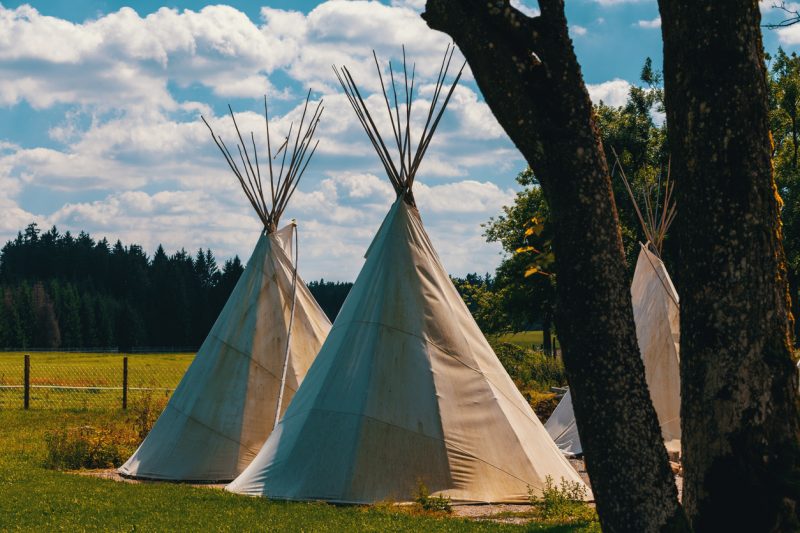
This requirement for buffalo skins meant that only the Plains Indians had the opportunity to build teepees. To try and build a similar structure out of deer hides would require five to eight times as many hides, depending on the size and species of deer used.
In the East, especially the Northeast, a totally different style of construction was used to make the wigwam. This was a permanent hut made of saplings and tree bark.
As mankind has always done, the eastern Indian tribes used the materials readily at hand. Making a wigwam out of those materials helped it to blend into its surroundings quite well as well as ensuring that there was an ample supply of materials to make repairs from if needed.
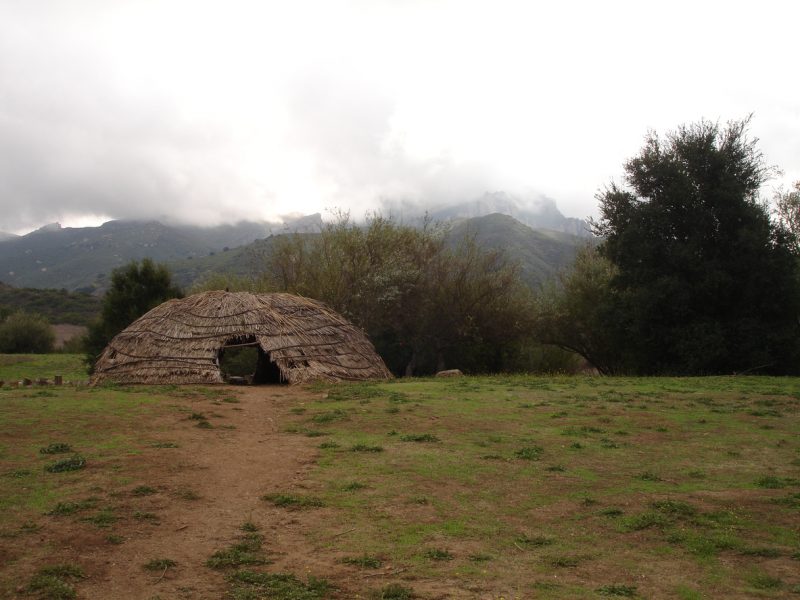
Building a Wigwam
A wigwam was fairly easy to construct as it used materials that could be found in the ample woodlands where the Indians lived. For the structure, they started out with 25 saplings or so, ranging from 10 to 15 feet in height. These were cut and the cut end sharpened to go into the ground.
Typically, a wigwam was 10 feet in diameter, although they could be larger and more of an oval shape rather than round. While the smaller ones were dome-shaped, the larger ones could have straight walls with a domed roof, creating even more usable space within.
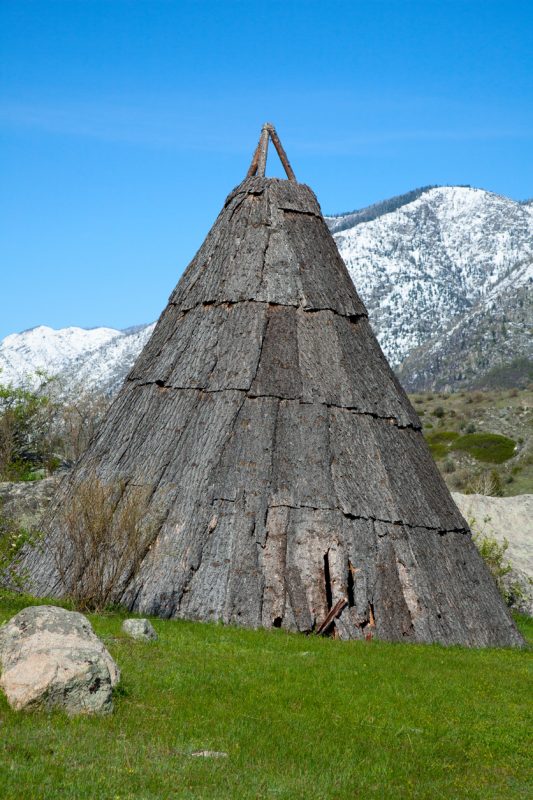
Before construction, the ground would be cleared, removing stones and making it level. Then, saplings were pounded into the ground around the perimeter.
Once secured, their tops were bent over and tied. Depending on how big a wigwam was being built, the saplings could be bent all the way back over to the ground on the opposite side or they could be connected somewhere in the middle with saplings that were coming from the other side.
The next step was to band the wigwam with a couple of rows of saplings going all the way around the structure, one roughly. These were tied to the already existing saplings and were mostly to help the structure hold shape, preventing the saplings forming the dome from spreading out. With everything tied together, you would have a strong, stable structure.
Covering the Wigwam
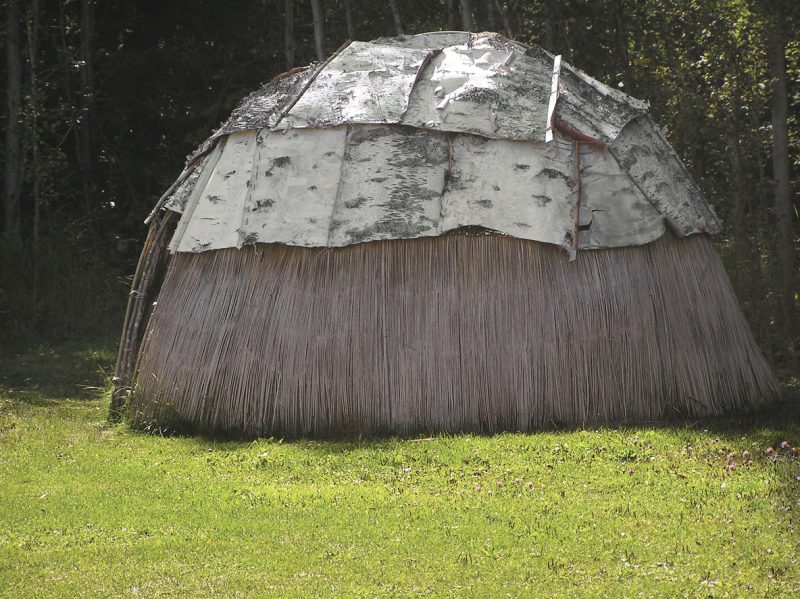
The normal way of covering a wigwam was with slabs of bark – specifically birch bark. The birch tree is unique in that you can peel the bark off of it and it will not die, just as long as you leave the inner bark intact. All other trees die when you peel off the bark, partially because it is impossible to peel the outer bark off without destroying the inner bark.
The bark from the birch tree is also quite flexible, making it ideal for not only constructing wigwams but also for building birch bark canoes.
While other types of bark could be used, birch bark was preferred. If good bark wasn’t readily available, mats could be woven out of many different types of plants – especially those with long leaves. Another option would be to cover the wigwam with skins if you had enough skins to use.
In any case, the covering was tied to the framework with cordage cut from a tanned hide. Openings were left for a doorway and for a smoke hole in the center of the roof.
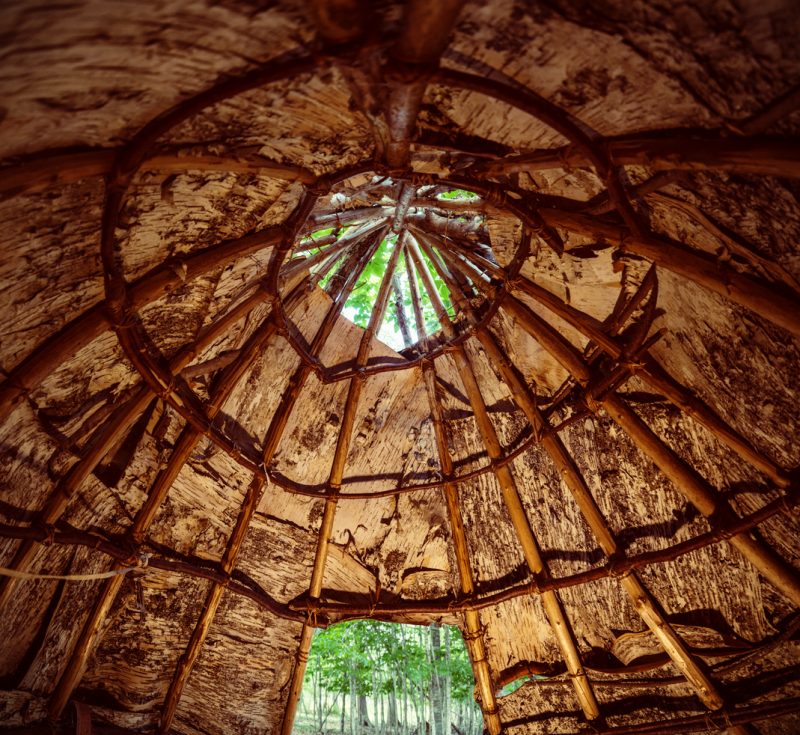
The covering was always attached from the bottom up, allowing successively higher courses of bark or woven mats to overlap the layers below. This helped with the shedding of water as the water dripping off the upper courses would fall down on the outside of the next layer of covering, allowing it to continue flowing to the ground.
This is an important point in the building of any sort of primitive shelter. You always have to start from the bottom, with successive courses of coverings overlapping those below.
This allows the water to run down the outside of the structure. If you did it in reverse, water would drip off the covering at each course, making the inside of the structure and everything in it wet.
In the wintertime, a door made of hide was stretched across the doorway and tied to keep the wind out and help keep the wigwam warm. However, the inhabitants were mostly dependent on the fire to keep them warm and the surrounding woods to protect them from the wind.
Using a Wigwam in a Survival Situation
Wigwams are one of my favorite survival shelters. Easy to build, roomy, and water-tight, they provide a snug shelter out of the wind and rain. Unlike a debris hut, they have a considerable amount of room, allowing several people to shelter together along with their supplies. It is also possible to make them out of readily available materials that can be found on site.
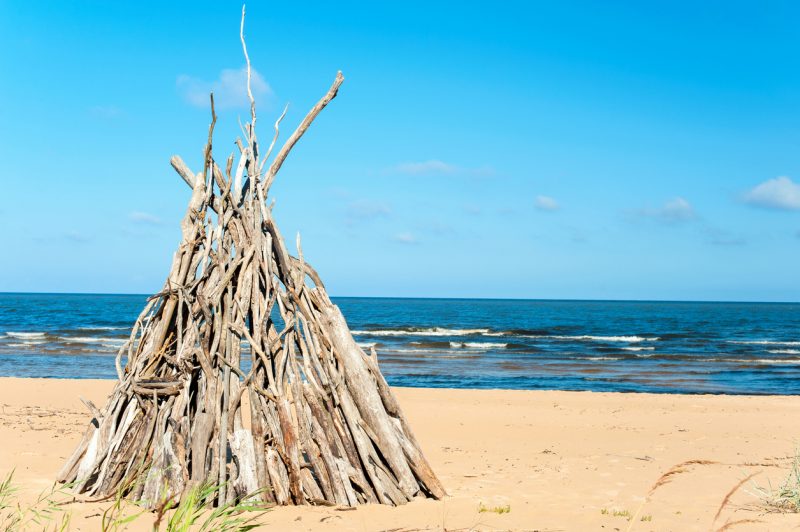
A simpler alternative to this design can be made by starting out with saplings that are already growing in a circle six to seven feet across. Clear out anything between the saplings and then tie them together, leaving them planted in the ground. Add the bands, just like normal, although they will be shorter.
Then, cover the framework with branches cut from trees (pine trees work best), with each successive course of branches overlapping the one below.
Another Article From Us: Found in Permafrost: 2,300-Year-Old Cabin Rebuilt
While this simpler alternative won’t be as watertight as the original, it makes a great temporary shelter for use in a wilderness survival situation. It gives you enough space for two people to sleep comfortably, along with your gear. Additional branches can always be added later as the leaves dry, to help it repel water.





